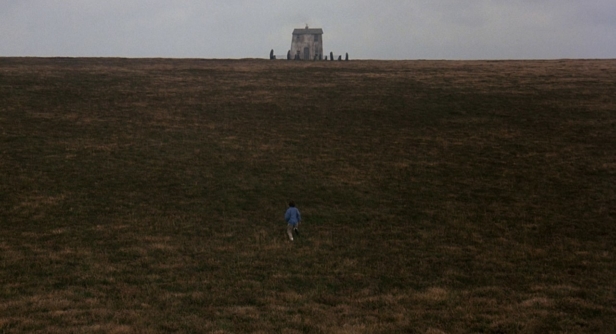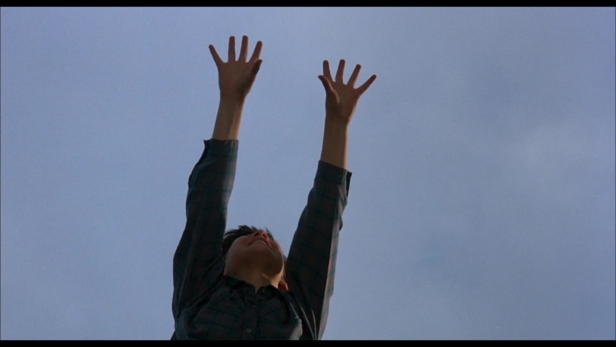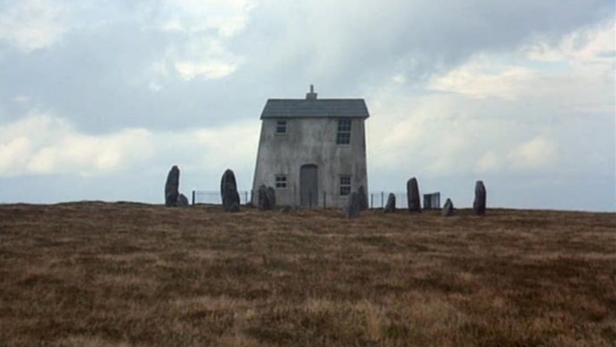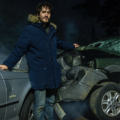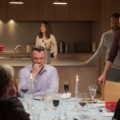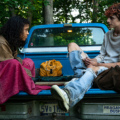“We only barely finished it in time to make the Toronto film festival”, director Bernard Rose recalls when talking about the international premiere of his film Paperhouse in 1988. “I remember I hand-carried the print with me to Toronto. I flew over there for the screening…I literally had the print in my luggage. People were coming out of the theatre and this guy came out and gave me two thumbs up! I didn’t know who he was but my producer told me it was Roger Ebert. Roger really loved the film and played it years later at his festival in 2002.”
Still now, Rose’s dark fantasy film feels overlooked without a proper home release and confusion over who owns the theatrical rights to the film all these years later. It’s playing at BFI this month from the director’s own personal 35mm print. Rose reflects on the legacy of his film and how it impacted his career, saying, “It was always well regarded but completely ignored commercially. It was never a huge success in the theatres. It got mixed reviews but people in Hollywood liked it because they thought that I might be somebody who could make thriller and horror films which wasn’t wrong! It certainly did me a lot of good in those terms, though the film didn’t make any money. In the 1980s that kind of genre was not taken seriously or admired in the way it is now but the film has had a huge afterlife thanks to people who really adored it.”
At the suggestion that Paperhouse has a lot in common with Guillermo del Toro’s Pan’s Labyrinth, Rose says, “There are a number of filmmakers who have directly referenced it. Pan’s Labyrinth being one of the most obvious in that there are many things from Paperhouse in it with the drawings becoming reality and the little girl turning the circumstances of her daily life into a mythical dream world.” In Paperhouse a young British girl is taken ill and enters a dreamworld where her drawings come to life. She begins a friendship with a young boy suffering from muscular dystrophy but as her sickness progresses her dreams turn in to nightmares. Her maturation is marked by empathy and sorrow as she deals with loneliness and grief.
Rose goes on to mention its influence on Dave McKean and Neil Gaiman’s Mirrormask and Peter Jackson’s The Lovely Bones. Rose also talks about Charles Laughton’s The Night Of The Hunter as well as Ingmar Bergman’s body of work as huge touchstones for his adaptation of Marianne Dreams by Catherine Storr. But why did the material appeal to him as a young filmmaker? “Catherine Storr was a child psychologist so she wrote the novel from a position of knowledge rather than fantasy and I think that underpins it. That’s part of what’s so powerful about it. There’s something about the way dreams operate in the novel that feels very accurate. There was something very poetic and universal about the story that was unique in a spooky way.”
Rose worked with producer Tim Bevan of Working Title to get his film off the ground, with Bevan optioning the book rights and bringing Matthew Jacobs on board to write the screenplay. In the US, Vestron and in particular, Dan Ireland supported the release. Stanley Myers was brought on to create an orchestral score but his music was ditched before release. His assistant, Hans Zimmer worked on a tight deadline with Rose to turn in something that would please the US producers. “When the film was finished the American producers did not like Stanley’s score…I think they didn’t like the film to tell the truth. They thought it was too strange and arty and they thought if maybe they put a more aggressive score on it, it would somehow punch it up a little. It’s actually one of Hans’ first scores, and now he’s a superstar. Hans did the whole score on a Synclavier. We worked on the score together and it was done at Stanley and Hans’ place in Fulham.”
Paperhouse is packed full of surreal visuals and practical effects that were brought to life at Pinewood studios. “The film was designed by two people, Gemma Jackson (Game Of Thrones) and Anne Tilby. One of the things that we were very lucky with in the film is that this was a time when the British film industry was in a period of inactivity so the film was actually shot in the biggest stage in Pinewood. The whole of the house and the exterior moor outside was actually built in a studio. It wasn’t a particularly expensive movie but there were these things that were available.”
Rose continues to explain how his film wouldn’t be made the same way today, and how the practical visuals lend the film a unique quality. “The sky outside and the night-time scene were painted – they weren’t real. The whole flat moor was a huge set with the house built full size, though the very wide shot was shot on Exmoor. In that sense those sequences have a graphic strength as they’re large scale. They were paintings and they weren’t CGI. Obviously now we have CG and many more things would happen in the dreams and it would be less interesting. It’s that weird thing that happens when things aren’t concrete.”
Paperhouse plays at BFI on 25 April. Find more information here. You can read more of this interview in the next issue of SciFiNow, on sale 3 May.
